
While the hippies amongst us have always known about the goodness contained in sprouts (my mum used to send us to school with a peanut butter + alfalfa sprout sandwich, remember?), it’s only been in recent years that this preparation method has entered collective conscience. I’ve been asked a bunch of times if I could provide a little more info on my sprouting technique, as I eat sprouts in some form or another most days and often share photos on my Instagram feed. I probably sprout mung beans and lentils more than anything else, but I’ll often sprout chickpeas before cooking or making into falafel (you can find my recipe in My Darling Lemon Thyme, my first cookbook), as well as quinoa and occasionally broccoli seeds too.
Packed full of more protein and readily available nutrients than their dried counterpart, sprouted legumes and grains add a lovely boost to your diet. They’re also much easier to digest once sprouted and contain fewer anti-nutrients and phytic acid, which is always a good thing.
Smaller legumes such as mung beans, blue peas, adzuki beans and lentils can be eaten raw or cooked, whereas larger beans such as kidney beans or chickpeas benefit from being cooked after sprouting (but can totally be eaten raw if so desired too!).
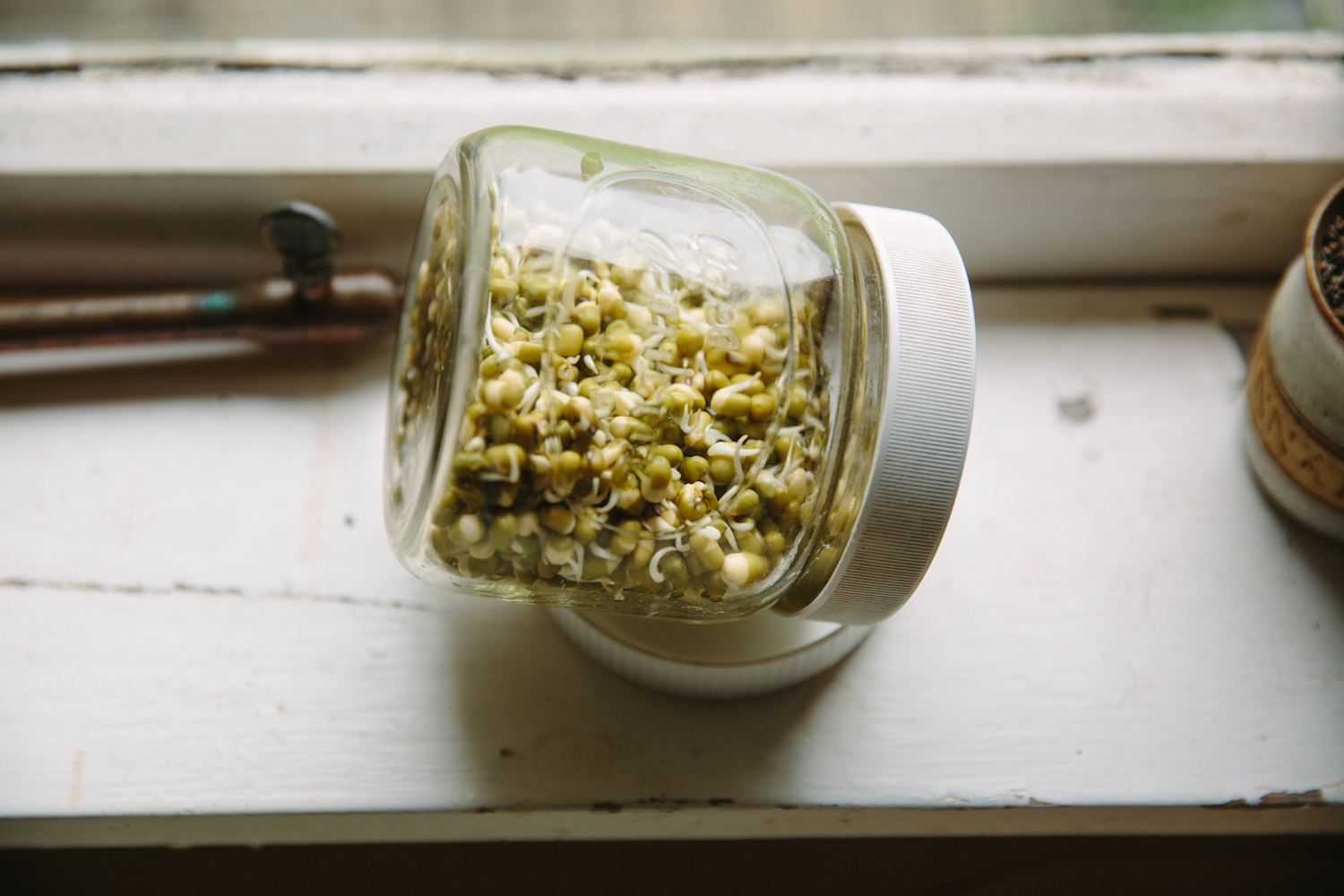
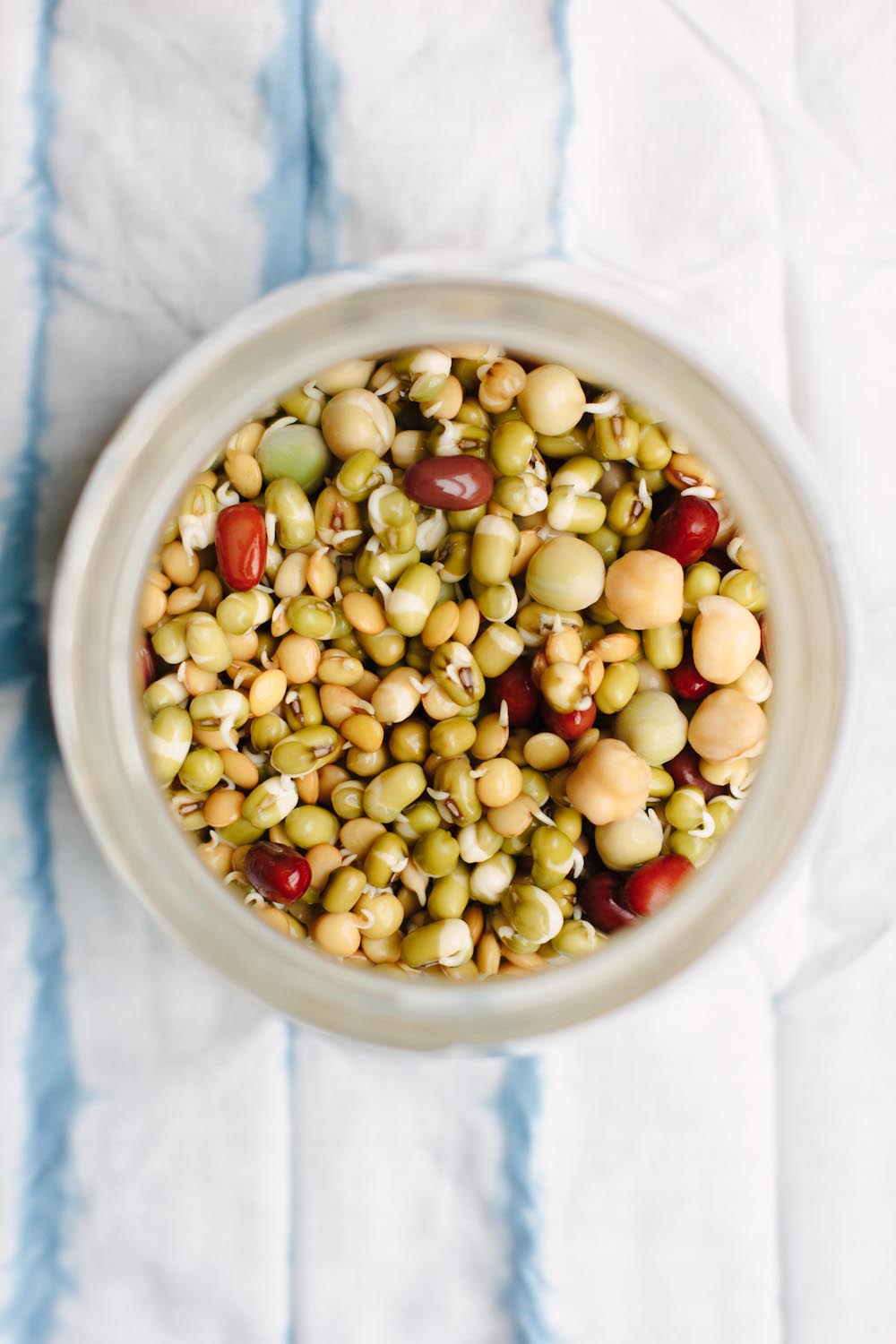
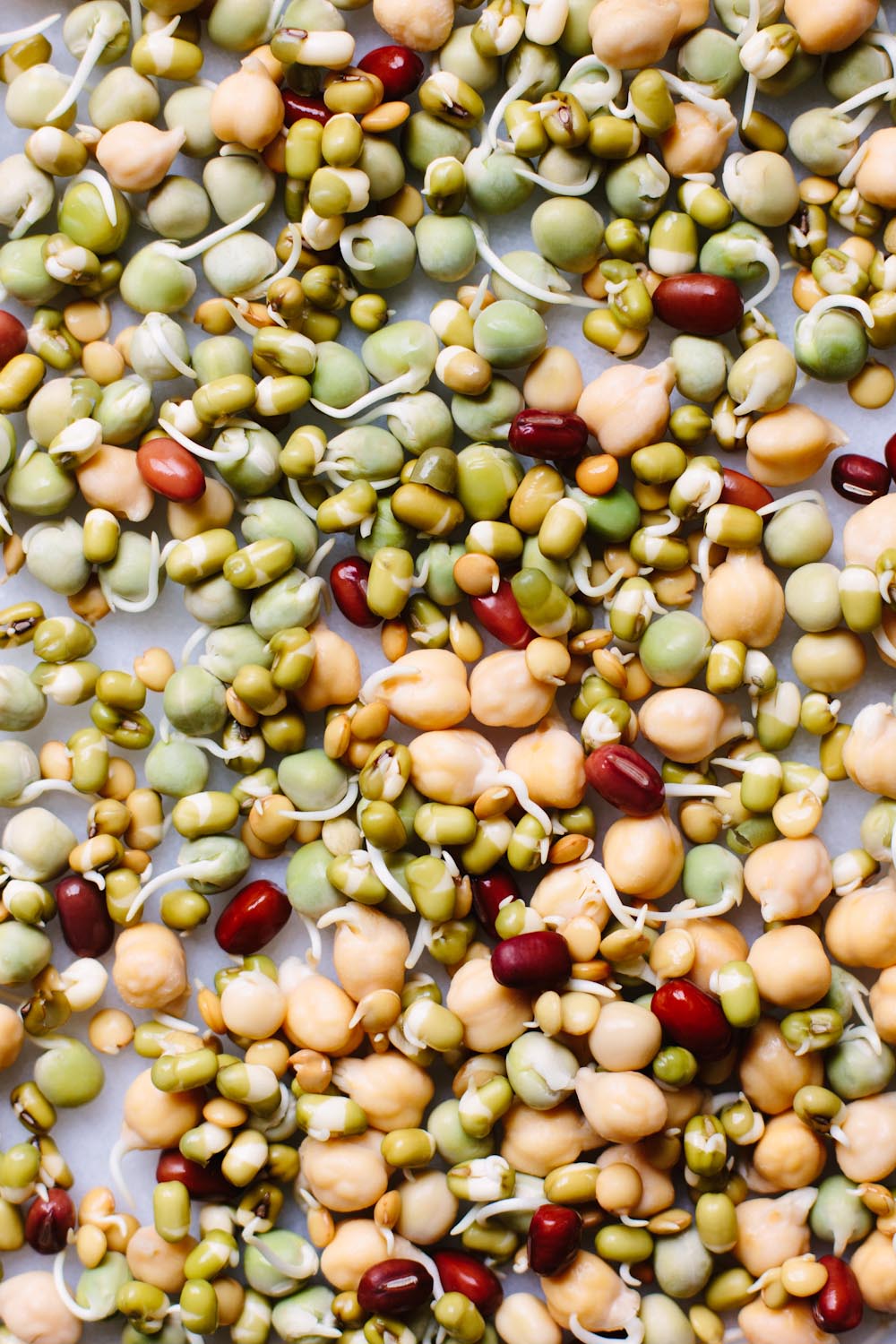
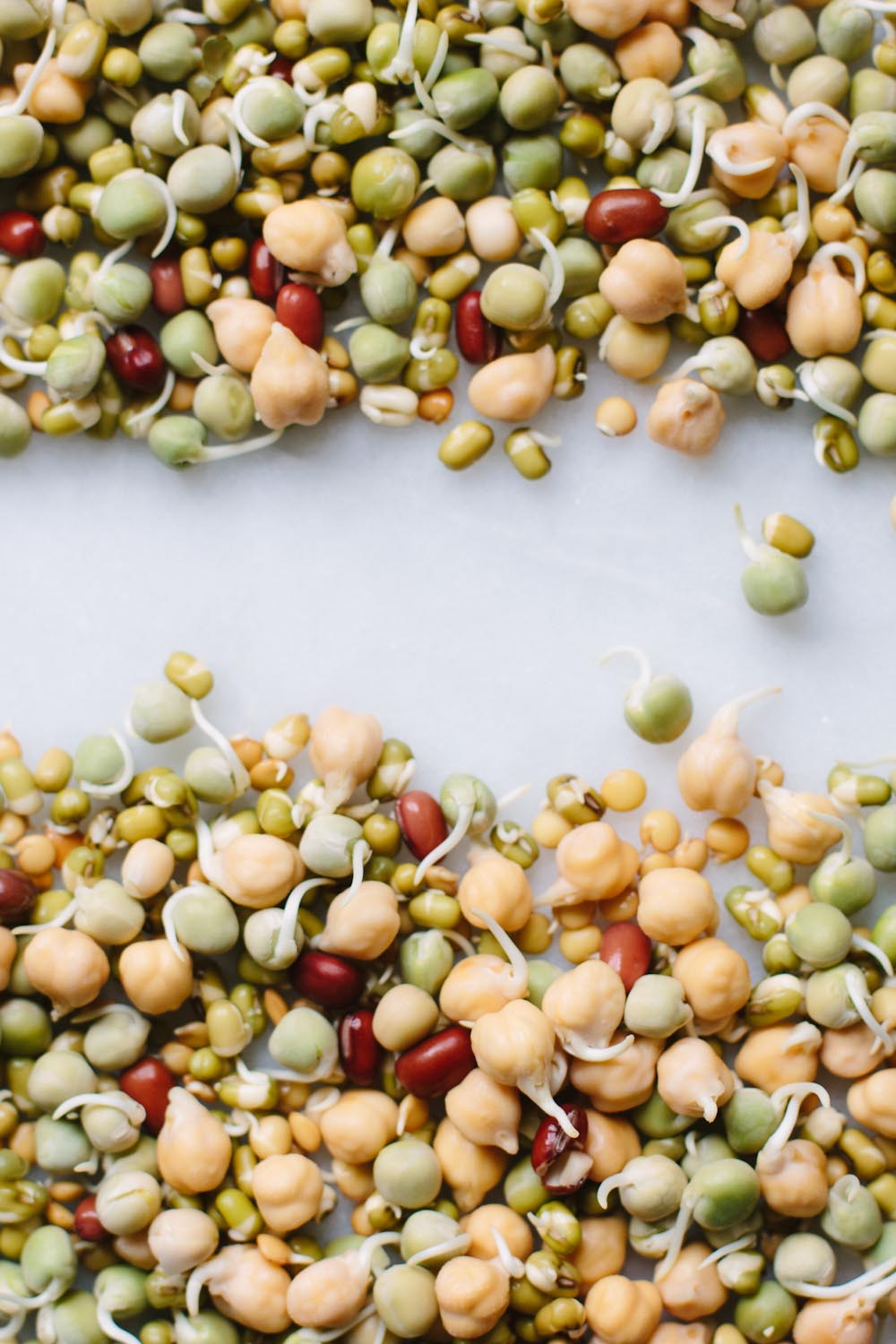
1/4-1/2 cup dried legumes (I love mung beans, lentils and blue peas the most, but chickpeas, whero peas, adzuki and other beans can also be sprouted too).
Place your chosen legume (or a mixture) into a glass jar (Agee jars are perfect), cover with plenty of cold filtered water, screw on a sprouting lid (or use a piece of muslin and a rubber band to hold things in place) and leave on your bench overnight. The following day, drain the water, rinse and drain again. Place jar on its side or rest upside down in a bowl on a slight angle, to allow any excess water to drain off, then place on your bench in a bright spot out of direct sunlight.
Every day rinse and drain your sprouts before returning to the bench. After 2-4 days your sprouts will be ready to eat. Lentils, mung beans and blue peas sprout quickly, while other beans can take up to 4 days to sprout.
VERY IMPORTANT TIP! To ensure your sprouts are dry enough to store, spread them out onto a clean tea towel and leave to air dry for 2-3 hours before transferring to a glass jar/container and storing in the fridge. This stops them from going manky straight away in the fridge. Your sprouts will keep for up to a week in the fridge.
Sprouted legumes can be eaten raw in salads or can be cooked and added to stews and soups for added goodness.
Sprouting grains
Grains such as quinoa, buckwheat and brown rice can also be sprouted before eating raw or cooking.
To do this, soak grains (I usually do about 1 cup at a time, but of course the amount it up to you!) overnight in plenty of cold water. Add a splash of apple cider vinegar/lemon juice or whey to the water to help improve digestibility even more. I leave them to soak overnight on the bench during cooler weather, but in summer you’d be best to pop the covered bowl/jar into the fridge. The following day transfer soaked grains to a fine sieve (I find it easier to transfer soaked grains to a sieve to sprout instead of leaving them in a jar as I do for legumes, as they have more room than in a glass jar), rinse well, then place over a bowl, cover with a glass lid and set aside on the bench to sprout. Rinse your grains twice a day, morning and night until they’re sprouted to your liking. I usually only sprout quinoa for one day (soak grains overnight – next morning drain + sprout – that evening eat raw or cook), whereas buckwheat and brown rice usually takes 2-3 days to sprout. (Click over to this post, if you’d like to see photos of my sprouted quinoa and grab a recipe using it!).
A little note on buckwheat. There’s no need to soak buckwheat groats overnight, 2-4 hours is plenty. Make sure you rinse and drain the soaked groats well, as they’re really slimy after soaking (NB: This is normal!).
Sprouting seeds
Seeds such as broccoli seeds, sunflower seeds, mustard seeds, alfalfa, radish, onion and cabbage can also be sprouted following the same instructions for legumes. Once they’ve started to sprout, I tend to transfer them from a glass jar to a sieve (like I do for grains) covered with a glass lid, to ensure they don’t get soggy/moldy from sitting in residue water before they’ve sprouted enough to eat. This ensures they drain really well after each rinsing.
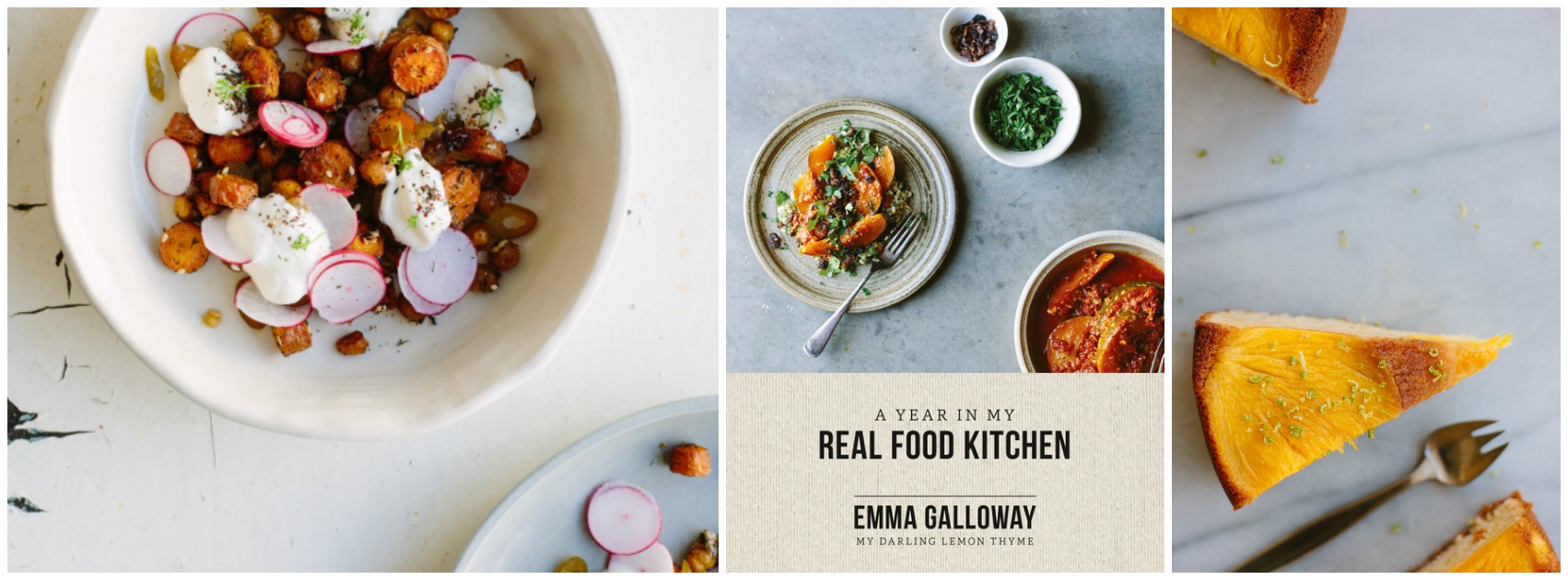
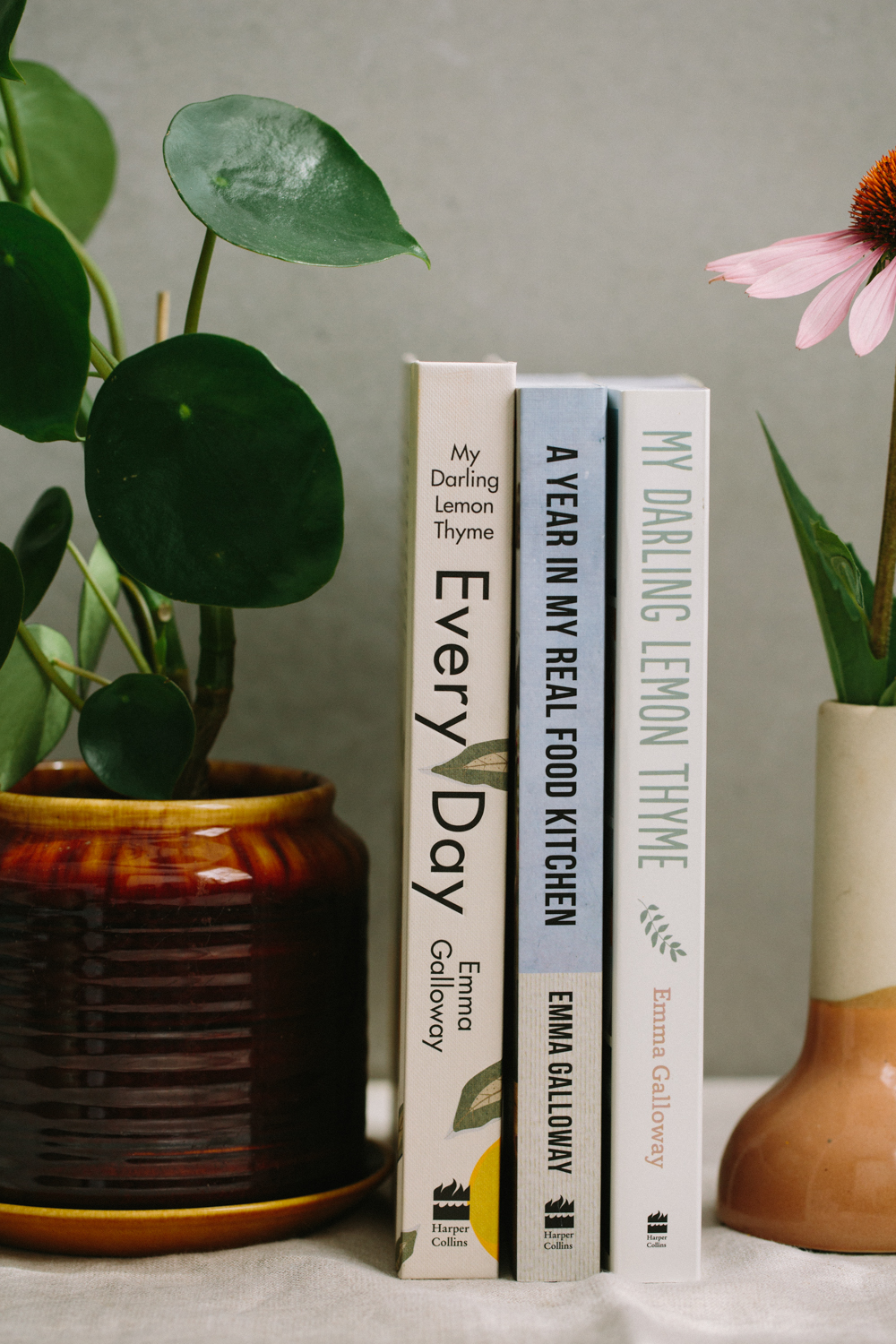




5 Responses
Hi Emma, Thanks for this good post. I have a question about buckwheat. I use buckwheat groats as a base for gluten free muesli – which means they get roasted along with the nuts, seeds, & coconut. Is it a good idea to soak them first, or will the roasting make them nutritious and digestible enough. I used to roast them first using My New Roots recipe, but find they’re just as good without this extra step. Any thoughts?
Thanks, Ruth
Hi Ruth,
I’ve not done much with toasted buckwheat groats sorry (I’ve tried really hard to love them, but I just don’t sadly! I much prefer to cook buckwheat in water) and while I imagine toasting them will make them more digestible, soaking them beforehand would make them more-so, especially if you sprouted them first before roasting. If you did go this route though, you’d need to do a long, slow roast, more like dehydrating- to ensure they dry out properly and don’t just burn on the outside and stay soft on the inside. xx
This is a perfectly timed post thank you! We already enjoy sprouting grains at home but haven’t had much luck with chick peas… is it possible to sprout store brought one or will they not work because they may have been irradiated? Or do you buy seeds/beans etc specificly marketed for sprouting?
Thank you!
Sorry for the slow reply! I buy organic non-irradiated chickpeas and legumes, not specifically marketed for sprouting, just ones you’d normally soak, cook and eat. Thanks for the reminder about irradiated pulses, it totally slipped my mind to mention this. I will add a note to my post. x
Your post remind me about my mom. When I was a child, she used to sprout mung beans and use them to make a wonderful soup for my family when she has free time, With a child like me that moment, it is magic when saw a bean become to a plant.